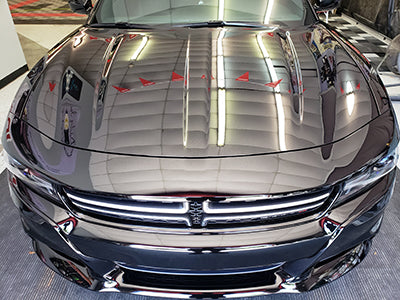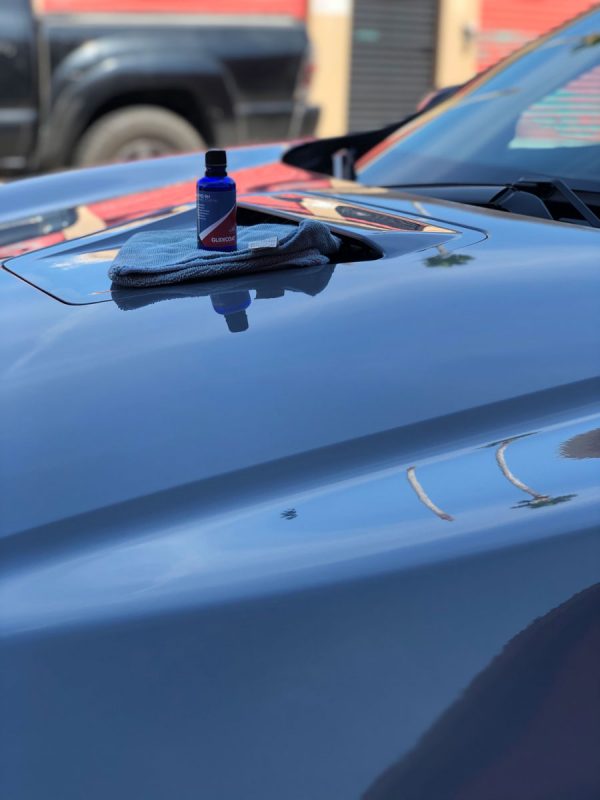Ceramic Coating vs. Sealants: Understanding the Distinctions for Your Vehicle
Ceramic Coating vs. Sealants: Understanding the Distinctions for Your Vehicle
Blog Article
The Importance of Ceramic Coating: Protecting Your Automobile's Outside With Precision
In an age where maintaining the practical and aesthetic stability of your vehicle is paramount, ceramic layer becomes a crucial remedy. This safety layer not just guards versus environmental misfortunes but additionally raises the aesthetic allure of your vehicle. With its special bonding homes, ceramic finishing uses a level of security that far exceeds typical waxing approaches. Just how exactly does it accomplish such impressive outcomes? As we check out the subtleties of its application and contrast it to other options, one can not help yet question about the specifics that make this technology crucial for modern-day auto treatment.
Advantages of Ceramic Coating
When it comes to preserving a cars and truck's visual charm, ceramic finishing provides substantial advantages. By forming a semi-permanent bond with the automobile's paint, ceramic coverings successfully prevent oxidation and fading, guaranteeing that the automobile maintains a shiny, showroom-like surface for an extended period.
In addition to its safety top qualities, ceramic finishing uses exceptional hydrophobic residential properties, causing water and other liquids to grain off effortlessly. This attribute simplifies the cleaning procedure, as dirt and particles are less most likely to stick to the surface area, reducing the frequency and effort required for upkeep. The finishing's resistance to chemical discolorations from acidic impurities like bird droppings and tree sap is one more notable advantage, decreasing prospective paint damages.
Ceramic finishes likewise boost scrape resistance, offering a layer that can absorb small abrasions and swirl marks. This feature is specifically advantageous in maintaining a pristine surface, lowering the chance of visible imperfections and maintaining the integrity of the car's paintwork over time.

Just How Ceramic Finish Functions
Comprehending the technicians behind ceramic coating reveals its efficacy as a protective service for cars. Ceramic coverings are basically liquid polymer applications that chemically bond with an automobile's manufacturing facility paint, developing a protective layer.
Application of ceramic coating entails a precise process. The vehicle's surface need to be completely cleaned and decontaminated to guarantee optimal bond. When applied, the fluid polymer creates a semi-permanent bond with the paint, hardening into a transparent, resilient shield. This shield enhances the vehicle's gloss and hydrophobic residential properties, helping with much easier cleansing by triggering water and contaminants to grain and slide off effortlessly.
Additionally, the coating's molecular framework supplies resistance to minor scratches and chemical discolorations. Unlike waxes or sealants that sit on top of the paint, ceramic layers incorporate with the surface area, using durable security. This combination is fundamental to its performance, making certain the vehicle's finish stays beautiful for many years.
Comparing Ceramic Coating to Alternatives
In the realm of auto security, ceramic finish stands as an awesome option when compared to standard choices such as waxes and sealants. While waxes use a short-term lustrous finish, generally lasting just a couple of weeks to pop over here months, ceramic finishings provide a longer-lasting option, frequently sustaining for years. This durability is credited to the chemical bonding that occurs when ceramic coatings are applied, forming a solid layer that is resistant to environmental dangers.
Contrastingly, sealers, although more resilient than waxes, still disappoint the robust defense used by ceramic coverings. Sealers can usually last for as much as a year, providing an artificial guard versus specific elements. Nonetheless, they lack the premium hydrophobic properties and UV protection that ceramic layers provide.
Moreover, ceramic coverings provide boosted scrape resistance, which neither waxes nor sealers can efficiently match (ceramic coating). This is particularly valuable in maintaining a cars and truck's immaculate appearance. Additionally, ceramic finishings streamline upkeep initiatives by reducing the adherence of dust and crud, consequently facilitating simpler cleansing. In summary, while typical waxes and sealers offer basic security, ceramic finishings present a detailed, lasting service that considerably improves and preserves the car's exterior finish.
Application Refine Described
Applying ceramic finish to a vehicle needs a meticulous process to make certain optimum outcomes and durability. When cleaned, the automobile is dried out and polished to get rid of any imperfections, as any type of existing swirls or scrapes can become extra obvious after the covering is applied.
Complying with surface area prep work, the application of the ceramic covering begins. The coating is usually applied in a climate-controlled atmosphere to protect against dirt particles from picking the fresh cleaned up surface area. Utilizing an applicator pad, the ceramic coating is applied in little areas to make sure even protection. It is vital to follow the supplier's guidelines pertaining to the ideal treating time and application density.
After application, the coating requires a certain curing period, during which the automobile needs to be safeguarded from water and contaminants. This curing procedure can vary relying on the product but normally varies from 24 to 2 days. Eventually, this in-depth process is crucial in achieving a durable and shiny finish.
Upkeep Tips for Long Life
To keep the long life of a ceramic covering, adherence to a self-displined upkeep regimen is crucial. Normal washing is paramount; utilize a pH-neutral automobile hair shampoo and soft microfiber mitts to stay clear of abrasions. Avoid automated automobile washes, as their harsh brushes can jeopardize the covering's stability. Instead, choose a hand clean to make sure detailed yet mild cleaning.
Post-wash, drying out the lorry with a clean microfiber towel protects against water places that may weaken the finishing gradually. Furthermore, use a ceramic layer booster every couple of months. These boosters strengthen the hydrophobic properties and enhance the covering's protective abilities, ensuring it stays reliable against pollutants.
Bear in mind that car parking areas play an essential function in upkeep. ceramic coating. Whenever possible, park in shaded her comment is here locations to minimize UV exposure, which can gradually deteriorate the layer. For long-term storage space, think about utilizing an automobile cover for added protection versus ecological components
Verdict
In conclusion, ceramic coating offers as a crucial protective layer for car outsides, using resilient protection versus environmental aspects such as grime, uv, and dust rays. Comprehending the application procedure more and sticking to upkeep referrals are crucial for making best use of the longevity and performance of ceramic layer.
When it comes to preserving a vehicle's visual charm, ceramic layer provides substantial advantages. By developing a semi-permanent bond with the automobile's paint, ceramic coatings properly avoid oxidation and fading, making certain that the automobile preserves a glossy, showroom-like coating for an extensive period. Ceramic finishes are basically liquid polymer applications that chemically bond with a vehicle's factory paint, creating a safety layer. In summary, while conventional waxes and sealers supply basic security, ceramic coatings offer a detailed, lasting solution that dramatically maintains the vehicle and boosts's exterior coating.

Report this page